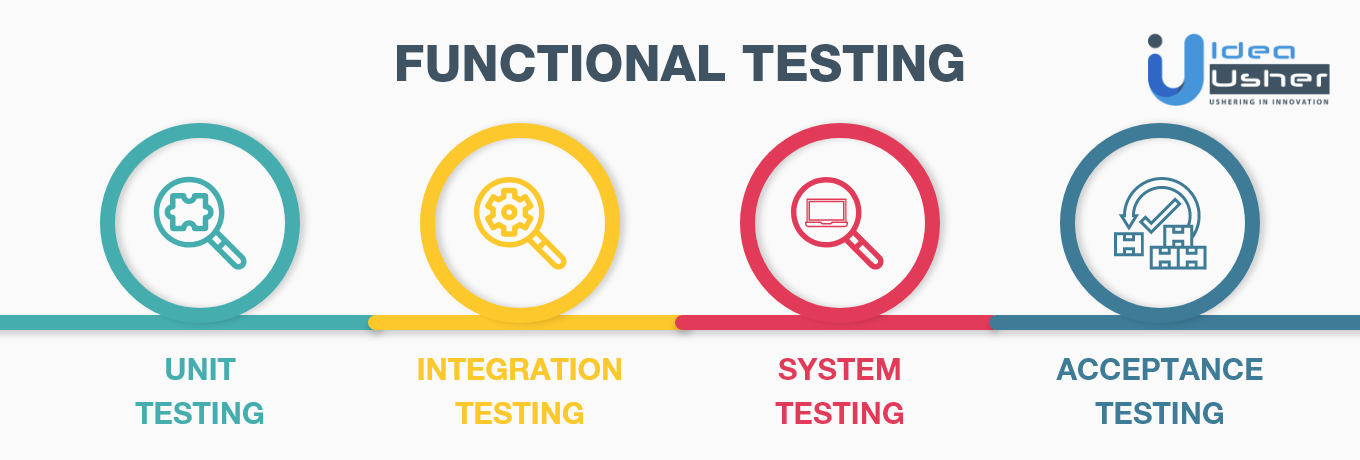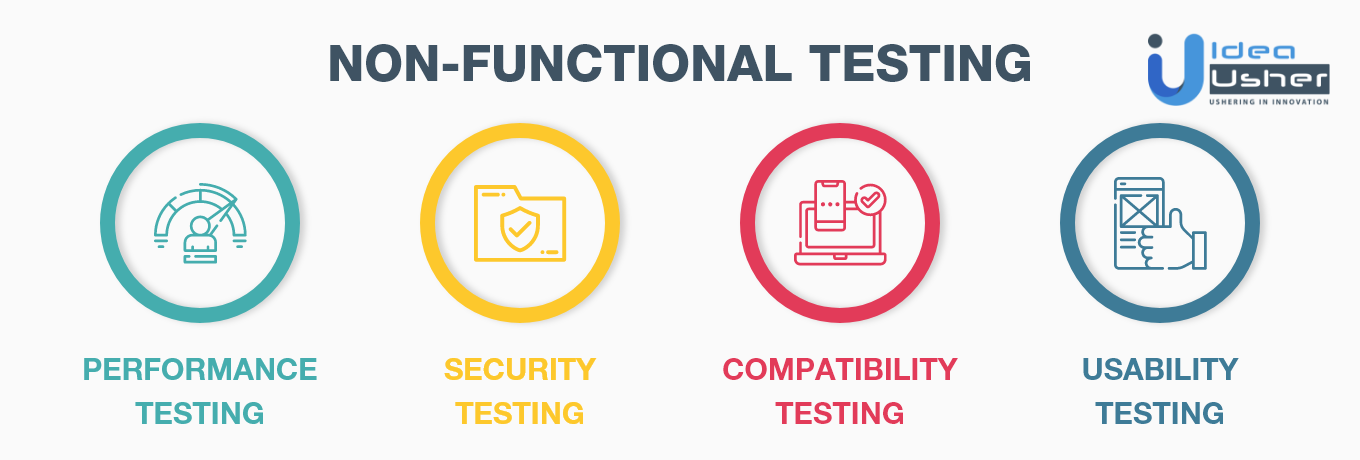
The Need for QA Methodologies
What do you think is the most crucial step before finally taking your software to the market?
Marketing? Well yes, but there is another thing you need to pay attention to, QA Methodologies.
Even before you start advertising your software, you need to make sure it works smoothly. Otherwise, it will soon see itself out of your customer’s devices, never to return again. The most annoying thing for any user is the software that frequently crashes and has plenty of bugs.
Like always, Idea Usher will crack the code for you.
Quality Assurance (QA) Testing is the answer. Yes, we know some see it as a futile addition to the cost, but it is a vital investment. Even if you deploy all your resources in developing a breathtaking user interface with splendid features, your software won’t sell much if it is not of decent quality.
We are at your service with the most robust and stable QA methodologies and tools that will skyrocket your business. Let’s dive in!
What is Quality Assurance?
Instead of jumping straight to the QA methodologies, let’s take a moment to understand what Quality Assurance is and what begets its dire need.
Quality Assurance Testing, popularly known as QA Testing, is a process undertaken by developers to ensure that the software meets the quality standard requirements. The developers, in this process, aim to relieve the software of any flaws or malware, ensuring that only the most effective and efficient product is launched in the market.
 Remember! The quality of the software is not judged by its smooth working alone. It must also be reliable enough to prevent any future discrepancies.
Remember! The quality of the software is not judged by its smooth working alone. It must also be reliable enough to prevent any future discrepancies.
QA Methodologies
The secret to building an app, website, or software of unparalleled quality is having a robust and agile software Quality Assurance methodology in place. Acknowledging the importance of QA testing, Google built its own test machine to identify and fix any flows with their system.
However, not everyone has enough resources to deploy at testing alone; need a quick fix?
We will make this complicated web of data easier for you to comprehend. Let’s start by breaking down the most crucial QA methodologies into two distinct categories, Functional and non-functional testing.
Functional Testing
Functional Testing is the “business process testing methodology”.
In simple words, this QA methodology strictly focuses on ensuring that the software works in line with the business objectives. It does not deal with the technical aspects of the software at all.
They can further be divided into four steps, each ensuring efficiency of the software.

Unit Testing
This is the first level of testing that ensures that each module or unit of the software/application works efficiently. Generally, a manual unit test is performed by the developers before the testing process officially begins. However, developers prefer automated QA testing, which makes debugging the software easier and quicker.
Integration Testing
Is it not enough to know that each unit is performing well individually.
After the unit test is performed successfully, the objective is to ensure seamless interactions between various units of the software. An integration test is carried out to ensure a smooth workflow process, like logging into an application or opening a file.
System Testing
After analyzing and testing various units and scenarios of the software individually, a final test is executed on the whole system before forwarding it into production. This test is typically led by the testing team instead of the developers.
Acceptance Testing
As we said, software with bugs can be annoying for users. This last phase of the functional test is performed to ensure that the software is ready for the market. It must meet all the business and user requirements.
After a test by the QA testing team, an external software test is performed by end-users known as the Beta Test. It is the key to identify and fix any usability errors.
Non-Functional Testing
Once we have ensured that the software is working in line with the business process, we need to examine the operational aspects as well.
The non-functional testing methodologies in QA strictly focus on the product’s performance, security, compatibility, and usability. These, in turn, form the four segments of non-functional testing.

Performance Testing
The software must be responsive and stable. Performance testing ensures that the software runs efficiently under various environments. Everything from an instant spike in load to potential memory leaks is tested thoroughly to ensure high performance to users.
Security Testing
When it comes to technology, safety is an important aspect too. There has been a surge in cyber attacks and hacking, making it vital to ensure that your software keeps user information intact and secure.
This test is run to identify any security loopholes in the software and fix them.
Compatibility Testing
How do you ensure that your software is widely available and used?
Compatibility testing! It ensures that your software is compatible with multiple operating systems, platforms, or browsers. The goal is to ensure that the software’s functionality is not compromised in any environment.
Usability Testing
The ultimate goal of developing software is to provide a seamless experience to the end-users, and Usability Testing ensures just that!
It is generally performed at the stage of Acceptance or System testing to ensure that the software is easy-to-use from the end-user perspective. The design and user interface must meet the intended workflow processes.
You already are familiar with the various kinds of QA methodologies by now. But, how to adopt a flawless software testing approach?
Tips to Ensure the Best QA Testing
Well, Here’s a treat for you! We have laid down a few tips to ensure that you get the best result out of QA Testing.
- First, stop thinking about it as an added cost, but an investment.
- Create an experienced team and a robust testing environment.
- Describe the quality assurance standards in detail.
- Apply automated QA testing methodology to make the process quicker.
- Allocate sufficient time to each step and test. Don’t rush through things.
- And, Don’t ignore the importance of beta testing.
We are sure you can develop the best software, free of any bugs and issues, but only if you follow these tips sincerely! You can even take a course by Google here.
Or, there is a simple way around all your troubles. Idea Usher!
We are here to help you!
Idea Usher has a team of experienced tech innovators and marketing wizards, who use only the best QA methodologies and best practices for software testing.
We are just a phone call away! Contact us for a free consultation session with our experts.
Related posts:
- Waterfall vs. Agile: Choose the right methodology for your project
- How AI Can Enhance The Quality Assurance
- Hourly Vs. Fixed Price App Development
- Starting an app for Business Success: A Quick Guide
- What is software release management? Know the best practices.
- Why Get a Custom Android App Developed?
Powered by YARPP.
Hire the best developers
100% developer skill guarantee or your money back. Trusted by 500+ brands

Contact Us
- SCF 98, Phase 11, Sector-67 Mohali, 160062
- 651 B Broad St, Middletown, 19709, county New Castle Delaware, USA
- [email protected]
- (+1) 628 432 4305
HR contact details
Follow us on

Idea Usher is a pioneering IT company with a definite set of services and solutions. We aim at providing impeccable services to our clients and establishing a reliable relationship.
Our Partners
Contact Us
- SCF 98, Phase 11, Sector-67 Mohali, 160062
- 651 B Broad St, Middletown, 19709, county New Castle Delaware, USA
Follow us on

Idea Usher is a pioneering IT company with a definite set of services and solutions. We aim at providing impeccable services to our clients and establishing a reliable relationship.






